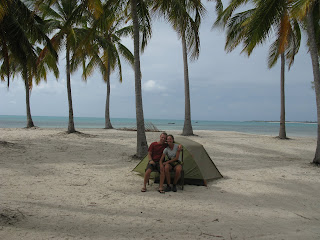A word about the Sudan visa situation for us lucky Americans...
There's a lot of conflicting info circulating online about what's required and what things cost. This is what we've learned firsthand (and it's been backed up by some other US passport holders in the past few days). First of all, there is currently no cost difference between the transit visa and the single-entry tourist visa. I know-- that makes no sense. But the Embassy made it clear, that is their current policy. Secondly, the cost is USD$200 per visa. I know-- outrageous; no comparison anywhere else in Africa that I'm aware of. We've elected NOT to pay this fee, and are instead spending the money on a flight from Ethiopia straight to Cairo, foregoing Sudan altogether. Which is a bummer, because we badly wanted to travel through Sudan... but not THAT bad. But if you're planning on getting one here in Addis, here's what the Sudan Embassy (here in Addis) told us on Sept. 24th. you'll need:
- 1 passport photo (but bring 2)
- copy of visa from your country of onward travel (if headed north, then they want to see your Egypt visa as evidence that you intend to move on)
-a photocopy of your passport (make it a nice color copy- don't give them any excuse)
- $200, US currency only
Notice that a "letter of introduction" was not mentioned to us, though it may come in handy while transiting through Sudan. I don't know. And also note that you will be expected to "register" once in Sudan proper, which involves a fee as well. So if/when you get your visa, the fun is not over.
And a quick note about acquiring Egyptian visas here in Addis: there is a 15 day processing wait, and apparently no way around it for Americans. UK citizens, Aussies, and plenty of other Western country nationals can get this time down to just a few days, but there is nothing that the helpful Embassy staff can do for us Americans-- we simply must wait. Also, the Egypt visa fee at their Addis Embassy is the same low price you'll find at the airport: US$20.
Lastly, here's what we've experienced regarding Kenya and Tanzania visas for Americans. Tanzania is crazy. each border post seems to give a different price and policy. Most Americans are currently paying US$100 per visa at the borders-- a multiple entry extended stay document. In this scenario the border officials will insist that the US$50 single-entry visa is no longer available to Americans (because the US has made it especially hard for Tanzanians to enter into the US!). At the airport, Americans have recently been paying US$100 as well, but we've heard a few sporadic reports of US$50 at the airport as well. at Tanzanian Embassies abroad, the US$50 single-entry visa seems to be the standard (this is definitely true for the Maputo embassy). What WE did at the Tanzanian border was this: we insisted on a US$30 transit Visa, which gave us 14 days. But be warned: in Zanzibar they'll likely spot this and explain to you that, if you're visiting Zanz, you're not really "in transit." At that point, simply play dumb and insist that you "upgrade" your transit visa to the regular single-entry visa for an additional US$20. This way, you've avoided the US$100 nonsense.
In Kenya, the visa situation for Americans is also variable, depending upon which border post you happen to be crossing. We crossed the Southern border, between Tanga and Mombasa (on the coast), and were charged US$50 for a single-entry 3-month visa. BUT, Americans that crossed in from Uganda have been paying US$25 for the same visa-- and an american that flew into Nairobi paid just US$10 at the airport for it (though her receipt said $25). So there is no consistency at all.
As for Ethiopia... oh boy. where to begin? actually, right now, for Americans, it's quite simple: the ONLY visas they're issuing to us, whether transit or otherwise, is at the airport. Period. No overlanders are being granted visas at the border crossings or neighboring embassies. So currently the only way to get an Ethiopian visa is to fly into Addis. And once you're there, it's very simple: US$20, takes a few minutes in a small office adjoining the Customs gate.












